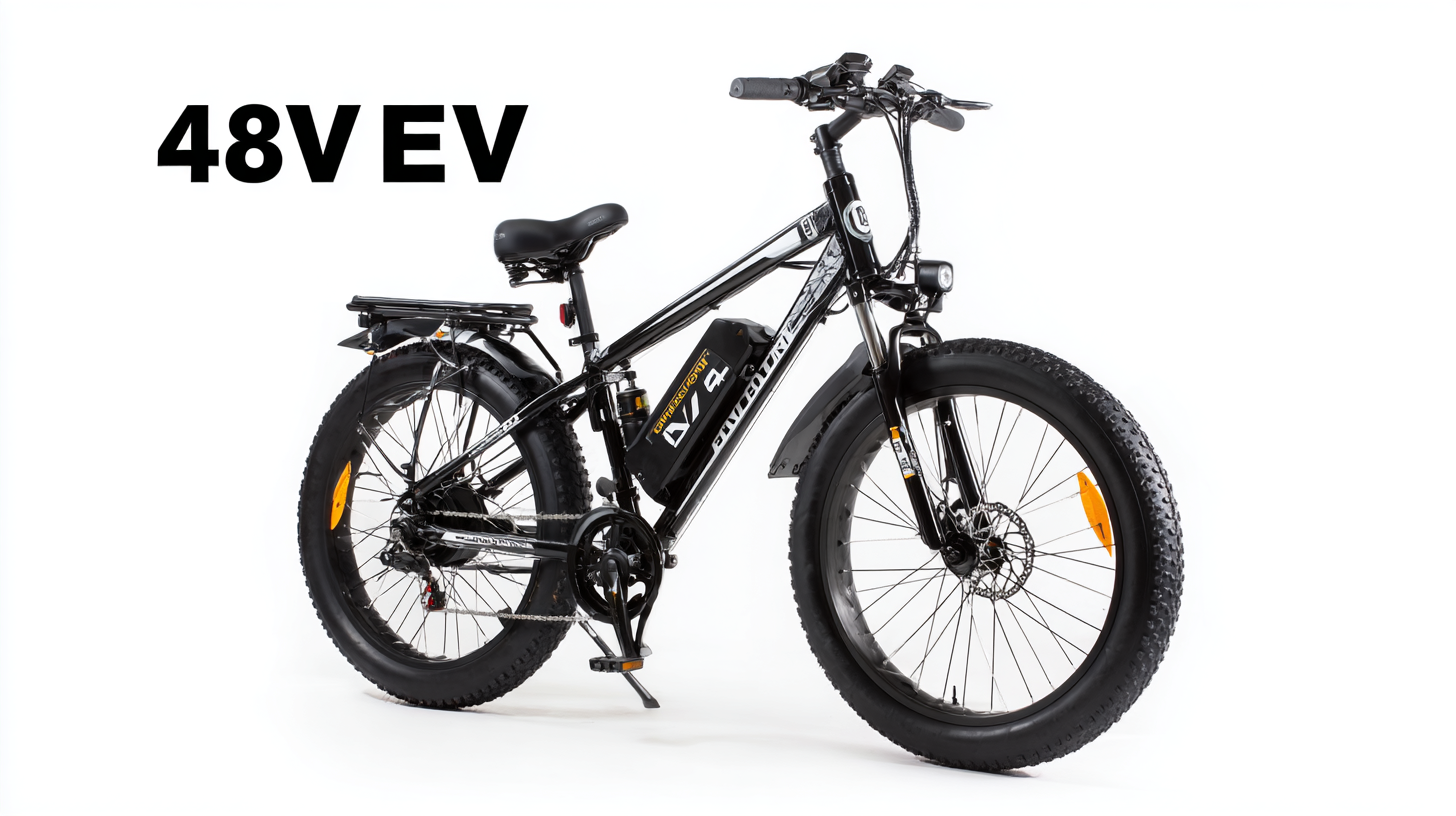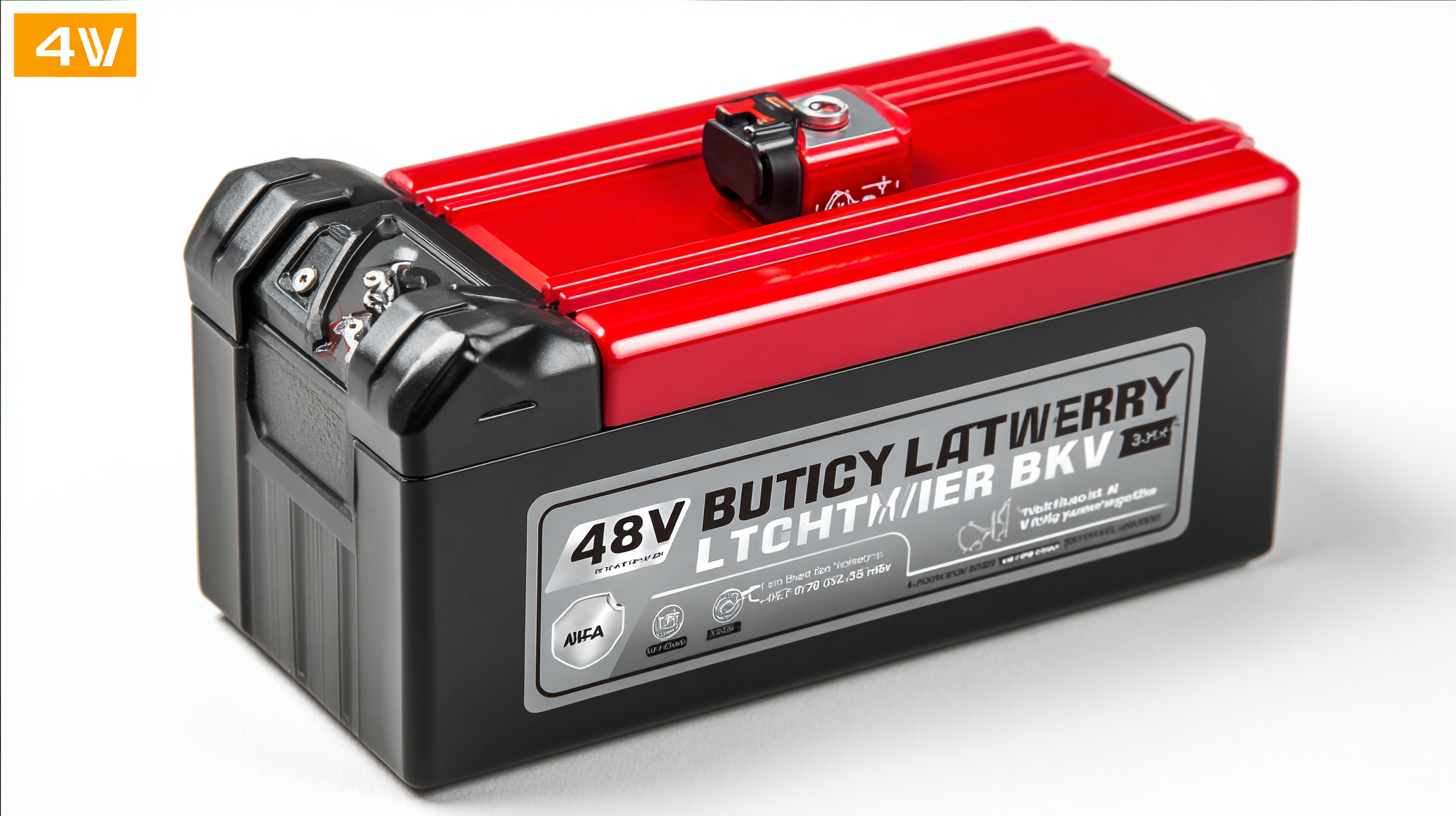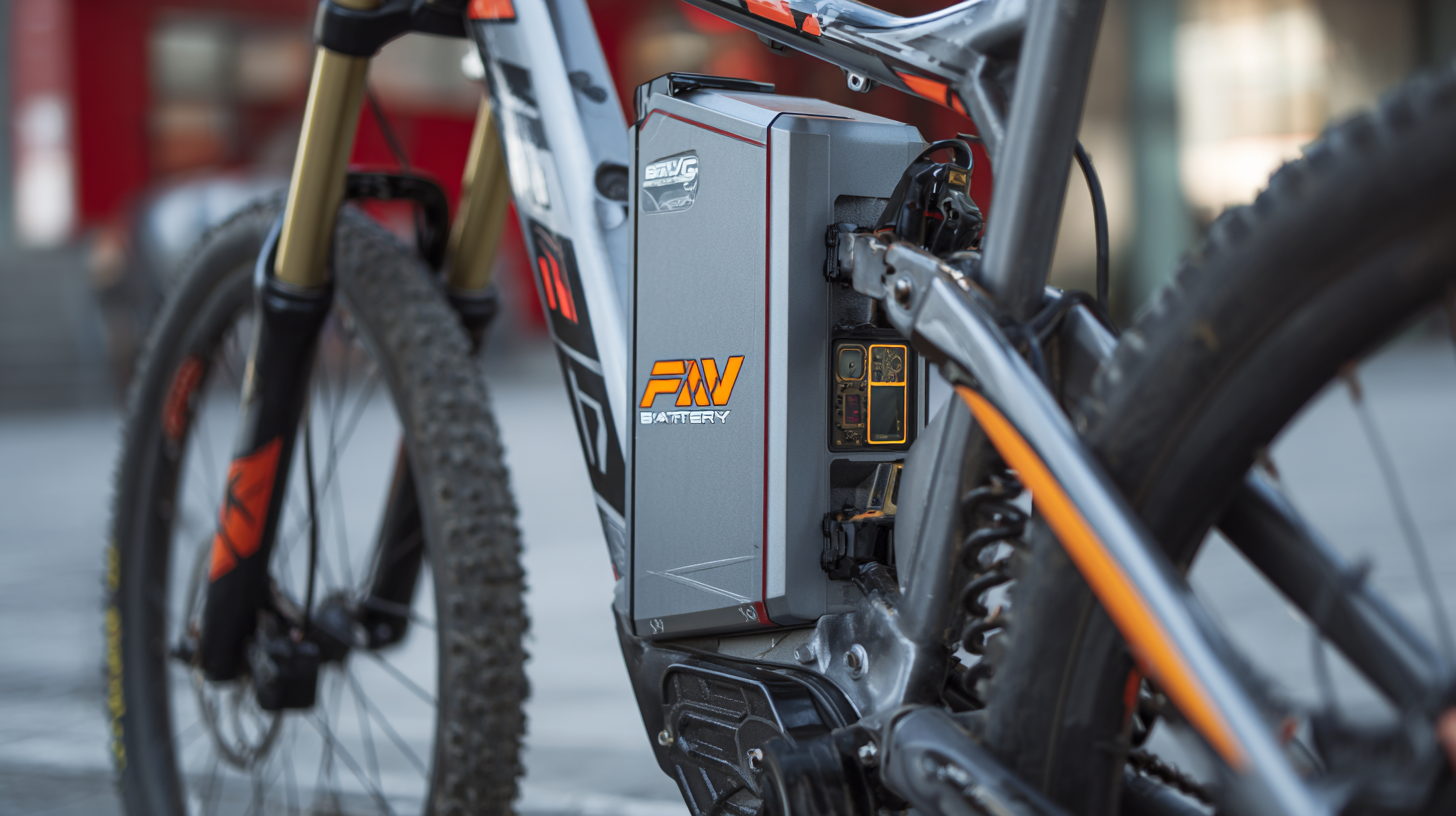The electric bike industry has experienced a significant transformation in recent years, driven largely by advancements in battery technology, particularly the 48v Lithium Battery For Electric Bike. According to a report by MarketsandMarkets, the electric bike market is projected to reach $24.3 billion by 2025, fueled by the increasing demand for sustainable transportation solutions and enhanced battery performance. The 48v Lithium Battery stands out as a top choice for e-bike manufacturers and enthusiasts alike, offering superior energy efficiency, longer lifespan, and faster charging times compared to traditional options. In this blog, we will delve into the five key reasons why the 48v Lithium Battery leads the industry in performance, highlighting how its innovative features contribute to the overall user experience and the growing trend towards eco-friendly commuting.

One of the key features that sets 48v lithium batteries apart in e-bike performance is their high energy density. This allows for efficient energy storage, delivering a substantial amount of power without adding significant weight to the bike. An electric bike equipped with a 48v lithium battery not only offers longer rides on a single charge but also provides improved acceleration and speed. Riders experience a seamless, powerful boost that enhances their overall cycling experience.
Another standout characteristic of 48v lithium batteries is their rapid charging time. Compared to traditional lead-acid batteries, these modern lithium options can recharge to full capacity in a fraction of the time. This convenience means less downtime for riders and more opportunities to enjoy the ride. Additionally, many 48v lithium batteries come equipped with advanced battery management systems, ensuring optimal performance and longevity. This technology minimizes the risks of overheating and overcharging, thus maintaining peak functionality throughout the lifespan of the battery.
This chart illustrates the key performance metrics of 48v lithium batteries compared to other battery types in electric bikes.
When it comes to electric bikes, the choice of lithium battery plays a crucial role in determining overall performance. There are several types of lithium batteries available for electric bikes, each with unique advantages. The most common types include Lithium Cobalt Oxide (LiCoO2), Lithium Iron Phosphate (LiFePO4), and Lithium Manganese Oxide (LiMn2O4). Lithium Cobalt Oxide batteries are known for their high energy density, offering a compact design ideal for lightweight bikes but may lack stability at high temperatures.
Conversely, Lithium Iron Phosphate batteries excel in safety and longevity, making them a popular choice for electric bikes that require durability and extended lifespan. They tend to be bulkier but compensate with a robust performance over thousands of charge cycles. Lastly, Lithium Manganese Oxide batteries provide a balance between power output and thermal stability, making them suitable for high-performance bikes that demand quick acceleration and robust energy delivery. Understanding these various types of lithium batteries can help consumers make informed choices aligned with their specific biking needs, ultimately enhancing their overall riding experience.
| Battery Type | Capacity (Ah) | Weight (kg) | Cycle Life | Max Discharge Rate (C) | Charge Time (hours) |
|---|---|---|---|---|---|
| Lithium-Ion | 12 | 2.5 | 500-800 | 2 | 4-6 |
| Lithium Polymer | 10 | 2.0 | 300-500 | 3 | 6-8 |
| Lithium Iron Phosphate | 15 | 3.5 | 2000-3000 | 1.5 | 6-10 |
| Cylindrical Cells | 13 | 2.8 | 500-1000 | 2 | 5-7 |
| Prismatic Cells | 14 | 3.0 | 400-800 | 2.5 | 4-6 |
When choosing the right 48v lithium battery for your e-bike, several key factors must be considered to ensure optimal performance and reliability. Firstly, the capacity of the battery, commonly measured in amp hours (Ah), is crucial; higher capacity batteries, typically ranging from 10Ah to 20Ah, offer longer ride times. According to a report by the International Energy Agency, electric bike range can vary significantly, with averages around 20 to 50 miles depending on the battery capacity and the rider's usage patterns.
Another important aspect is the battery's discharge rate, which impacts how well your e-bike performs at higher speeds and during inclines. Most high-quality 48v lithium batteries can support a continuous discharge rate of 20A to 30A, providing better acceleration and climbing ability. Additionally, consider the battery's weight and form factor, as these can affect the overall handling of the bike. A study from the Bicycle Product Suppliers Association highlights that the ideal weight for performance-oriented e-bikes is around 50 to 75 pounds, emphasizing the need for a well-balanced battery selection. Making the right choice will not only enhance your riding experience but also extend the lifecycle of your e-bike’s components.
The comparative analysis of 48v lithium batteries against other battery types reveals significant advantages that position them as industry leaders in performance for electric bikes. First and foremost, 48v lithium batteries excel in energy density, allowing them to deliver more power relative to their weight and size. This characteristic is particularly beneficial for electric bikes, where lightweight and compact design remains a priority. Additionally, their efficient charging capabilities mean quicker recharge times, enabling users to spend more time on the road and less time waiting for their batteries to recharge.
Another crucial comparison lies in the thermal management of these batteries. Research indicates that optimal operating temperatures significantly influence battery performance and longevity. Unlike traditional lead-acid batteries, 48v lithium batteries maintain stable temperatures during operation, which enhances their cycle life and reduces risks of thermal runaway. Furthermore, advancements in battery management systems provide sophisticated monitoring that ensures these batteries operate efficiently, maximizing their lifespan and performance. As the electric vehicle market continues to grow, the 48v lithium battery’s combination of efficiency, performance, and innovative technology positions it as a standout choice for consumers looking for reliability in their electric biking experience.

Proper maintenance of your 48v lithium battery is essential to ensure optimal performance and longevity. According to a recent report from the Battery University, proper charging practices can significantly extend the life of lithium-ion batteries, potentially increasing their lifespan by up to 500 cycles. This means consistently using a smart charger that prevents overcharging and recognizes when the battery is fully charged, thus protecting the cells from damage and ensuring peak performance for your electric bike.

Temperature regulation is another crucial factor. Research conducted by the National Renewable Energy Laboratory highlights that lithium batteries perform best between 20°C and 25°C (68°F to 77°F). Exposure to extreme heat or cold can lead to capacity loss and reduced efficiency. Therefore, storing the battery in a controlled environment and avoiding prolonged exposure to extreme temperatures can help maintain its health. Additionally, keeping the battery clean and free of debris is vital; regular inspections can prevent damage from corrosion and ensure optimal performance during rides.
By following these practical maintenance tips, you can achieve the best riding experience and extend the lifespan of your 48v lithium battery.


